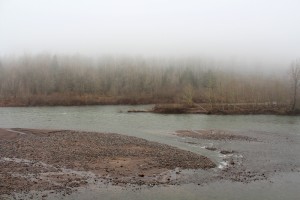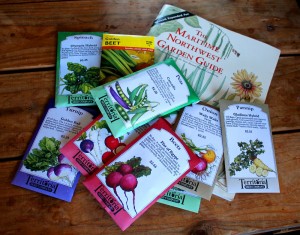Riding on the momentum of my last post, I’d like to trot out one of my pet peeves: the notion that this world doesn’t have any magic.
It’s a sentiment that I’ve heard here and there over the years among pagans and others. It generally starts with a discussion about how we can’t actually fly without support or shoot fireballs or change the color of our eyes with a spell, and complaints that there aren’t any dragons or unicorns or telepathic horses running around. This sometimes devolves into speculation that, as in some urban fantasy novel or White Wolf RPG, this world once had magic but somehow lost it when technology took over. Of course, no one ever provides any compelling evidence that this was the case in the past, and the speculation is usually defended with “Well, you can’t prove it wasn’t that way, so I believe it was!” This is then postulated as being as real a reality as that explored by science over the centuries, and no one can dissuade the speaker that there isn’t some huge government conspiracy to hide magic from the commoners.
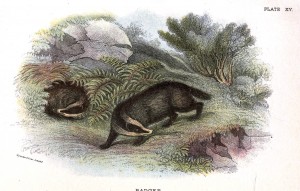
But what I don’t do is discount the everyday actions associated with finding work. I could whine that because owls on the wing aren’t bringing me job offers from an office of magical arts and that I have to hit the pavement like everyone else, the world has fallen from a former height and sunk into a morass of banality. Or I could just appreciate that it’s a fact of life that, generally speaking, you get out of life what you put into it, and the door to a world of applications and interviews is right over yonder. It’s still no guarantee of a job, especially in the current economic climate, but I can put forth as much effort as I possibly can under my current circumstances and work within the restrictions my reality presents. Not as much fun as a teaching position at Hogwarts, but much more likely.
So what does this have to do with dragons and other mythical beasties that supposedly once roamed this land? Well, while the fossil record is far from complete, there’s yet to be any evidence of any creature that violates the laws of physics in the way Smaug and his winged, fire-breathing dragon counterparts would. The biggest flying reptile that we have evidence for, the Cretaceous-era pterosaur Hatzegopteryx, had a maximum wingspan that topped out at just under 40 feet, and it probably didn’t hoard gems, breathe fire, or speak any human language. And no animal has ever evolved that, other than the occasional genetic mutant, had one single true horn in the middle of its forehead (the tusk of a narwhal is a modified tooth, not a horn). The closest thing we have is a rhinoceros, and probably no one would mistake that for a horse or deer-like creature in the 21st century.
But rhinos are pretty awesome in their own right. Like the other African megafauna, they’re a relic of paleolithic times when giant mammals roamed many continents. While their northern woolly cousins passed into extinction thousands of years ago, the five species still living have survived changes in climate and the rise of humanity as a dominant force on earth. And they’re absolutely necessary to the African savannah where our species came about: In areas where the white rhinoceros has been removed from its historical territory, for example, the entire landscape changes, from the soil on up. White rhinos add crucial nitrogen to the soil through their droppings, which sustains the vast grasslands in the savannah. Take away the rhinos, and the whole ecosystem suffers.* You know the story of how a European unicorn could purify poisoned water with a touch of its horn so that all the animals could drink it? The backside of a rhino may be less romantic, but it has a similarly positive effect for all the creatures and other living beings in its homeland.
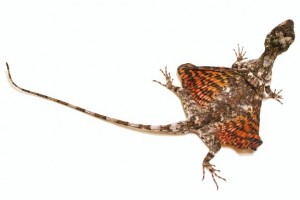
If mythical beasties aren’t your thing, what about a dash of alchemy? The ancient alchemists sought a way to transmute base metals into gold, as well as perform other internal and external transformations. But we don’t need gold to live; what we do need is energy, and we have the Philosopher’s Stone for that right in our front yards. I tend to go on and on about how awesome photosynthesis is, and for good reason–it turns sunlight into food, to explain it very, very simply. A more complex explanation is that plants have organelles called chloroplasts; these take the energy from sunlight and use it to turn the carbon from the carbon dioxide the plant breathes into a type of sugar, a simple carbohydrate. And if you think this is nothing special, consider that our experiments with artificial photosynthesis are comparatively crude and inefficient compared to the streamlined process that the plants have evolved over millions of years. We have yet to be able to successfully transform a base element (carbon) into the absolutely crucial “gold” carbohydrates we need to live, yet plants have the process perfectly streamlined. In fact, every bit of energy you get from your food started out as the product of photosynthesis, whether you ate the plants directly or the animals and fungi that ate the plants. In this regard, the green kingdom has better alchemists than we ever could dream of.
Why do I make such a big fuss about this? Partly because I feel that people who are overly fixated on fantastic escapism are potentially missing out on the wonders of this world and what they have to offer. It seems like such a sad viewpoint to see this world as utterly devoid of any magic, beauty, or wonder. I recognize that this can come about from a variety of valid causes, from depression to deep cynicism, things that all my perky “yay, nature!” cheerleading can’t negate. And sometimes fantasy and other fiction can be a nice temporary vacation from the cares of this world. However, all things in moderation: it’s not healthy to completely cut one’s self off from this world, and nature can be one way to be enticed back to the things that are good about the Earth**. You don’t only have to obsess about environmental issues, either; it’s okay to just sit in nature and absorb its restorative benefits.
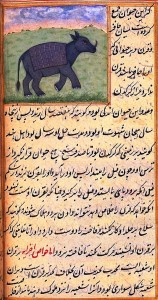
This, of course, is not to say that one’s life should be all activism, all the time. Everyone needs to make their own decisions as to how much to involve themselves in environmental movements (and whether they think a given movement is even valid). But if you’re going to complain that “this mundane world has no magic!” then I’m going to vehemently disagree with you. Just as you have to learn how to sense the magic inherent in things like spells, so you can also learn to see and feel and otherwise sense the magic that permeates every atom in this physical world–right down to the invisible force that holds the atom together. And sometimes perception, experience, and understanding are the best magical tools of all.
* There’s a fantastic BBC documentary series, “Secrets of Our Living Planet”, which addresses this and many other intricate relationships in nature.
** There are other ways to find wonder in the world besides nature, too. Human technology is a big one for some people; even I think it’s amazing that we can now print human tissue and organs! And the cultures of people past and present are another wellspring of curiosity and exploration, even if you can’t travel. And the arts, and exercise, and more–all of these have the potential for meditation, for creating change above and beyond our everyday lives, and for carrying spiritual inspiration through wonder and awe.




